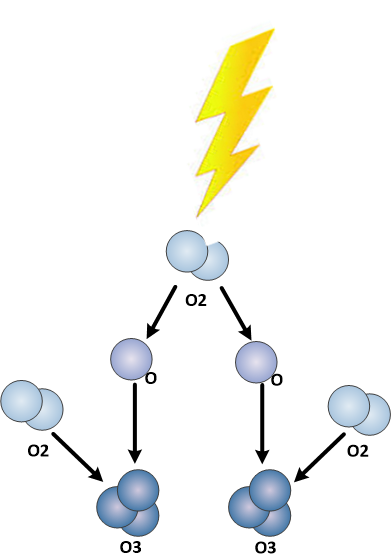Ozone Resistant Materials

The chart below shows various materials resistance to ozone oxidation. This chart should be used as a reference only. Some materials will be affected by ozone differently in wet, or dry conditions. Also, materials will react differently with higher or lower ozone concentrations. If you have questions about the materials used in your application, contact us, we would be glad to help.
A = Excellent - no effect from ozone in normal operation
B = Good - some oxidation from ozone, these materials can work with low ozone concentrations or short-term (less than 6-month) usage
C = Fair - major effect from ozone oxidation, these materials should only be used for short-term applications or very low ozone levels
D = Poor - severe oxidation from ozone will be noticed quickly.
| ABS plastic | B - Good |
| Acetal (Delrin®) | C - Fair |
| Aluminum | A - Excellent |
| Brass | B - Good |
| Bronze | B - Good |
| Buna N (Nitrile) | D - Poor |
| Carbon Steel | C - Fair |
| Cast iron | C - Fair |
| Ceramic | A - Excellent |
| ChemRaz (FFKM) | B - Good |
| Copper | A - Excellent |
| CPVC | A - Excellent |
| EPDM | B - Good |
| Fluorocarbon (FKM) | A - Excellent |
| Hastelloy-C® | A - Excellent |
| HDPE | B - Good |
| Hypalon® | A - Excellent |
| Hytrel® | C - Fair |
| Kalrez | A - Excellent |
| Kel-F® | A - Excellent |
| LDPE | C - Fair |
| Natural rubber | D - Poor |
| Neoprene | C - Fair |
| NORYL® | B - Good |
| Nylon | D - Poor |
| Polycarbonate | A - Excellent |
| Polyetherether Ketone (PEEK) | A - Excellent |
| Polyethylene | B - Good |
| Polypropylene | B - Good |
| Polyurethane | A - Excellent |
| PTFE | A - Excellent |
| PVC | B - Good |
| PVDF (Kynar®) | A - Excellent |
| Silicone | A - Excellent |
| stainless steel - 304 | B - Good |
| stainless steel - 316 | A - Excellent |
| Titanium | A - Excellent |
| Tygon® | B - Good |
| Viton® | A - Excellent |
The Basics
- Ozone is highly corrosive, poor quality materials will cause ozone leaks
- Materials will react differently to “Wet” and “Dry” ozone
- Ozone concentrations will affect material compatibility
- Many times, the best method to determine compatibility is to perform your own testing










